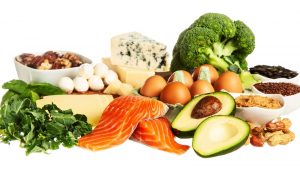By Heide Kennedy, Arizona Farm Bureau Communications Intern
Whenever we read about eating healthfully, we often run into the phrase “Nutrient-dense.” We can easily deduce that the phrase is referring to foods that are full of good nutrients. But just how much nutrient content does a food have to have to make it qualify as being “Nutrient-dense?” 
To put it simply, nutrient-dense foods are those that provide a large number of vitamins and minerals relative to their caloric content. Registered dietician Grace Derocha says that nutrient-dense foods “…Offer vitamins, minerals, antioxidants, water, fiber, and more without adding empty calories.”
Calculating the nutrient density of a food is done by adding points for its content of good nutrients like vitamins and minerals, fiber, and protein. Then, points are taken away for their content of bad nutrients, such as excess sodium and sugar, unhealthy fats, refined carbohydrates, etc. After the points have been determined, they are divided by a unit such as 100 grams or 100 calories to get its nutrient density score.
The following categories of foods all contain nutrient-dense foods, but there are a few standouts within each.
- Vegetables (Asparagus, bell peppers, broccoli, leafy greens, potatoes, pumpkin, sweet potatoes, yams)
- Fruits (Avocados, berries, mango, pomegranates)
- Lean proteins (Salmon, liver, eggs, beef, pork = pretty much all the protein meats)
- Nuts and seeds (Quinoa)
- Legumes
Eating nutrient-dense foods is important so that we can ensure that we are maximizing the amount of -nutrition we get from the foods that we eat. Arizona agriculture produces lots of these nutrient-dense foods! Look for locally grown products next time you’re out grocery shopping!
For more health-related articles, or for more information on where and how to find locally produced foods, check out the Fill Your Plate website!

